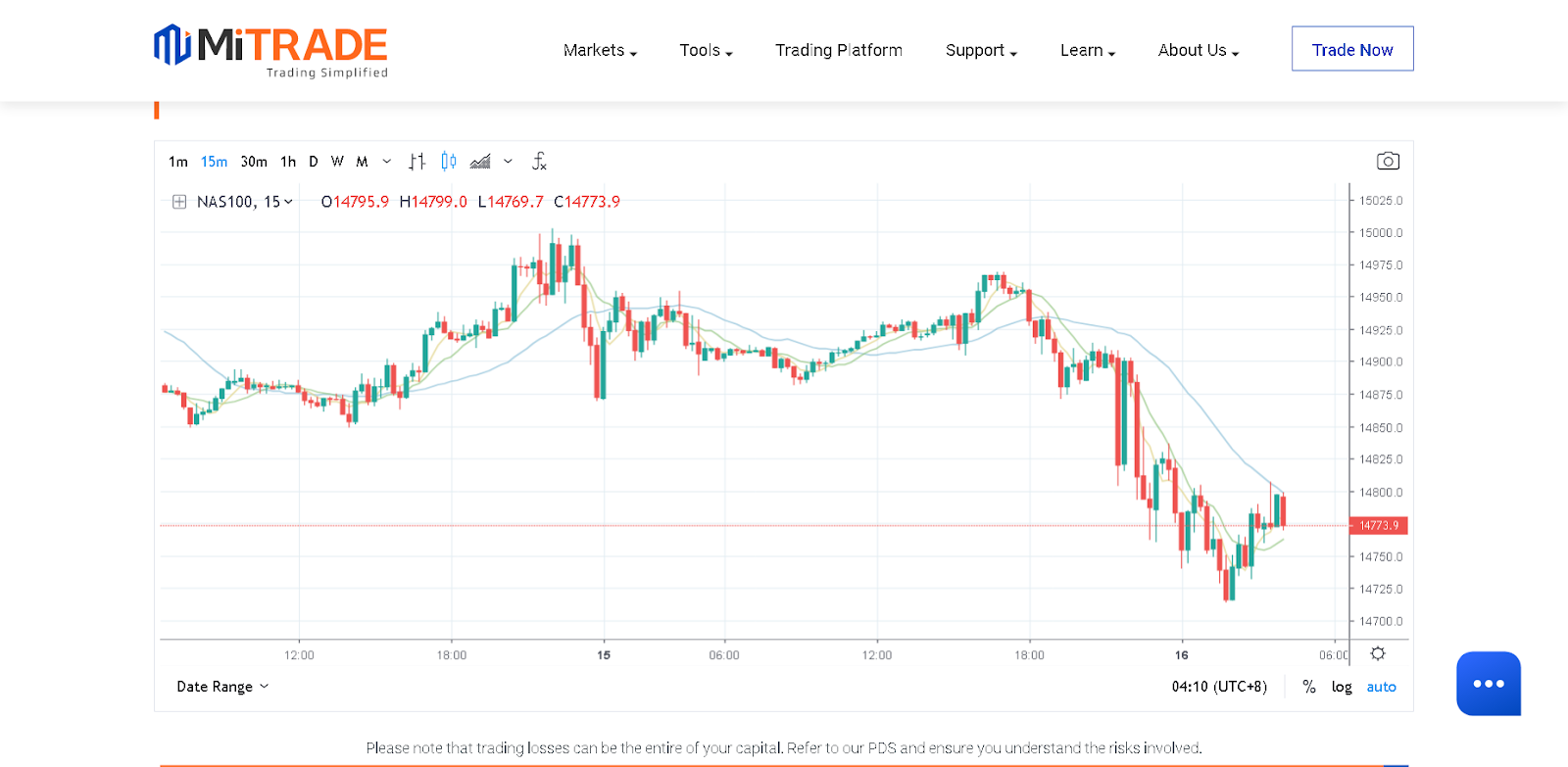How to Invest in Stock Market for Beginners

People have varying reasons for joining the stock market. Some people want to diversify their portfolio, some trade stocks as a day job or source of passive income, and other people want to make quick profits from stock market speculation.
Although stock market investment seems complicated, it is easy to join and start trading. In fact, it's the most recommendable initial investment for beginners.
The biggest hurdle for aspiring stock traders is they don't know where to start. If you are a beginner who wants to invest in the stock market, you've come to the right place!
Here is a guide to help you kickstart your new trading journey.
Steps to get started investing in stock market
Stock trading follows a simple set of steps.
● Research well-performing stocks
● Decide whether you want to invest for the short-term or the long-term
● Set up your trading strategy
● Learn to place trades and interpret charts
● Choose a broker and begin
Running out of time? Mitrade has created this short guide to help you begin your stock investment career!
Share trading with Mitrade 0 commission, low spreads. Enjoy limit and stop loss for every trade!
Get Started
How to read charts in trading stocks?
Reading stock charts requires familiarity with technical analysis and the different types of candlestick charts: bars, lines, and candlesticks. If you're a beginner, read this article to learn more: A Comprehensive Guide On Using Candlestick Chart Patterns.
A stock's ticker symbol is displayed on a chart alongside its price movements over the last minute, hour, day, week, month, or year.
There is an option to change the date interval on the display chart, which many traders refer to when using technical analysis or trading indicators to determine the future price movements of an asset.
A particular asset's price movement or performance is plotted in graphs so traders can visualize its upward and downward movements over time. The line graph and the bar chart are two chart constructions that show the underlying asset’s movement. Meanwhile, the candlestick chart provides greater detail, as shown in an example of NAS100 price movement on MiTrade below:

You can switch between the candle, line, and graph display by clicking the icon on the top left of the chart.
In this chart, you can see that the time interval is set to every 15 minutes. The graph also shows a significant decline between 16:00 and 2:00 hours. That means that during these hours, NAS100 was on a downtrend.
At the beginning of the 2:00 hour, the movement aims to go upward and establish an uptrend. Whether it's a success or a failure will show in the future price movements of the asset.
Stock trading strategy: Short-Term vs. Long-Term
Before you start investment, you should determine your goals. There are two trading approaches in stock trading: long-term and short-term. The choice depends on your investment goals.
Short-Term (Small, Quick Gains)
Short-term investing in stocks means holding a buy or sell stock position for several days or weeks. An example is day trading where you trade stocks within the open and close of the day. Day trading follows the principle of small, quick gains.
In short-term trading, you need to be familiar with technical analysis and strategies to execute successful trades. A popular short-term investment option for traders is stock CFDs. More on that later.
Long-Term (Value Investment, Slow Gains)
Long-term investing involves buying stocks that you think will perform well in the next five to ten years. It relies on the idea that the longer you hold an asset, the higher the gains.
The stock market is volatile, and economic or financial factors may affect the performance of investment assets. That means, there is a possibility of experiencing losses in the over five years you let money lie in the stock market. However, you could gain massive profits within the same period.
Investing in stocks VS. Trading stock CFDs
Investing in stocks and trading stock CFDs (Contracts for Difference) are two different ways to participate in the stock market. Here are the key differences between the two:
Investing in Stocks
Stock investment involves investing in the shares of a particular company, such as Jollibee Foods Corporation (JFC). Essentially, owning shares means owning a part of the company.
When you buy stocks from a company on an exchange, you need to pay the total price of each share. Your gains will depend on how much the share's price grows over a certain period, which is directly related to the company's growth.
Stock CFDs Trading
Trading stock CFDs is a form of speculation in which the trader is essentially betting on a stock's price movements rather than owning the actual stock.
When buying CFDs, you don’t own the underlying stock but instead enter into a contract with a broker to pay or receive the difference between the contract's opening and closing prices.
You can go long or short on a stock and leverage your positions, meaning you can earn larger profits than stock investing, but the risk of loss is also greater. Why, may you ask?
Because stock CFD is leveraged. For example, if your broker offers a 1:10 leverage, you only need to pay PHP1,000 to trade PHP10,000. While leverage can boost profits, it also means higher risks.
How to invest in Stocks step by step?
Step 1: Choose a Stock Broker
There are two options for investing in the stock market: Online brokers and Traditional stock companies.
Firstrade is one of the most popular online brokers for stock trading. The broker boasts a beginner-friendly and easy-to-navigate platform.
Step 2: Open and Fund Your Account
Open an account will typically involve providing personal information and identification documents.
Step 3: Research and select stocks
Look for companies with strong fundamentals, a competitive advantage, and a long-term growth outlook. You can use various research tools your brokerage provides to help you make informed investment decisions.
Step 4: Keep track of your trades
Keep an eye on your stocks' performance, and be prepared to adjust your strategy if necessary to ensure you are on track to meet your investment goals.
How Can You Make Money Investing in Stocks?
Stock trading is profitable when you do it right. There are two main ways that you can earn out of your stock investments.
Capital Gains
Capital gains or appreciation are the profits made from buying a stock at a lower price and selling it at a higher price.
For example, if an investor buys 100 shares of a company's stock for PHP 50 per share and sells them for PHP 70 per share, they will profit PHP 2,000. Capital gains can be a significant source of income for you if you hold onto stocks for an extended period.
Dividends
Dividends are payments made by a company to its shareholders as a portion of its profits. Companies can choose to pay dividends regularly or as a one-time payment. Dividends can be a reliable source of income if you prefer a more conservative approach.
How to invset in US stock CFDs?
The simpler way to invest in the US stock market may be to trade US stock CFDs.
Many online brokerages that accept the stock CFD include Mitrade. You only need to open an account online, deposit funds, and trade.
US stock CFDs enable you to capitalize on the price movement of major US shares, regardless of whether the value goes up or down. And with access to pre-and post-market pricing, you can easily seize all trading opportunities. In fact, US stock CFDs is an excellent way to gain big profits in a short period because you trade on leverage. In addition, you gain profits from trading stock CFDs whether you buy (go long) or sell (go short).
Let’s say you want to invest in NAS100. The share price for each NAS 100 is 5000 USD, and you want to invest twenty shares. Your broker offers a 1:20 leverage, which means you’ll only need 5,000 USD to trade a 100,000 USD position.
While that may seem like a big opportunity to trade, remember that your gains or losses are calculated on the total 100,000 USD position and not your 5,000 USD capital, called the margin.
$5,000 = ($5,000 x 20) ÷ (20 ÷1)
margin = (share price x quantity) ÷ (leverage)
Now, if you think the price will increase, you buy or go long, and if you think it will fall, you sell or go short.
For instance, if you bought 10 NAS 100 with the long price at 5000 and it rose to 5010, with each NAS 100 contract equal to 10 USD per point (pip), a ten-pip upward movement means you gained 2000 USD. It follows the same principle as selling.
See the calculation below:
Buy (Go Long)
$1000 = (10 x 10) x (5010 - 5000)
Profit = (quantity x price per pip) x (current price - price when bought)
If you decided to sell or go short when the value of NAS 100 was at 5000, and then it rose to 5010, your loss would be computed as:
Sell (Go Short)
Loss = (quantity x price per pip) x (price when bought - current price)
$ -1000 = (10 x 10) x (5000 - 5010)
These computations should elaborate on how leverage can be both an advantage and disadvantage in CFDs trading.
While it is very enticing to trade a large amount of money and just shelve a smaller portion of it from your wallet, your losses could also be much higher than you initially invested.
Stock market strategies for beginners
Investing in the stock market can be intimidating for beginners, but with the right strategies, it can be a rewarding experience. Here are some key strategies for beginners to consider:
Set Investment Goals
Before investing, it's important to set clear investment goals.
Are you investing for short-term gains or long-term growth? Are you looking for income or capital appreciation?
Knowing your goals will help you choose the right stocks and make informed investment decisions.
Never invest money you cannot afford to lose
Stock trading is a volatile market, and there is a huge possibility of making profits as there are losses. The PHP 20,000 you invested today could turn into PHP 40,000 or PHP 0 in weeks or months. So, don’t put your hard-earned money into stocks, just invest what little money you can afford to lose. Then, build your investments from that.
Always diversify your portfolio
Diversification is key to managing risk in the stock market. Rather than investing all your money in a single stock, consider investing in various stocks across different industries and sectors.
Always set a stop loss
People who do not use stop losses always learn the hard way after losing a couple of hundred pesos. But why wait for that when you can do that now?
Keep Your Emotions in Check
Stock prices can fluctuate rapidly, and it's easy to get caught up in the excitement or fear of the market. However, it's important to stay disciplined and avoid making emotional decisions based on short-term market movements.
Choose a good and reliable broker
Always choose brokers that international regulators regulate. How much you gain from your investment won't matter if you are trading with an unreliable broker.
At MiTrade, you can invest in US stock at competitive prices and begin your trading journey easily. Enjoy low fees, transparent spreads, and commission-free trading from a regulated broker today!
Free demo trading 0 commission, low spreads. Enjoy limit and stop loss for every trade!
Get Started
* The content presented above, whether from a third party or not, is considered as general advice only. This article should not be construed as containing investment advice, investment recommendations, an offer of or solicitation for any transactions in financial instruments.




